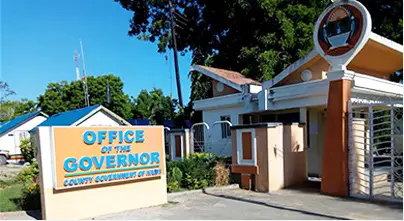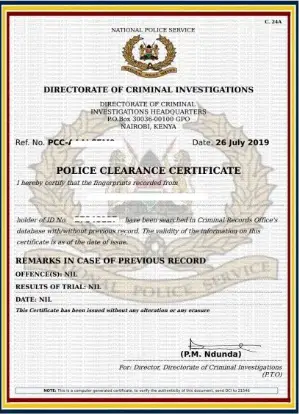If you’re interested in learning about the administrative divisions of Wajir County, then you’ll want to know about its wards.
Wajir County is located in the northeastern region of Kenya and is divided into six sub-counties, each of which is further divided into a total of 30 wards.
These wards are responsible for electing members of the county assembly, the legislative arm of the county government.
Each ward in Wajir County has its own unique characteristics, ranging from urban centers to rural areas. For example, Wagberi is a ward located in Wajir East sub-county that includes the township of Wajir, while Sarman is a ward located in Tarbaj sub-county that is primarily rural.
The number of wards in each sub-county varies, with some having as few as three and others having as many as six.
Wajir East Sub-County
Wajir East is one of the six sub-counties in Wajir County, Kenya. It has a total of four electoral wards which are Wagberi, Township, Barwaqo, and Khorof Harar. The sub-county covers an area of approximately 4,616.7 square kilometers.
Wagberi ward
It is located in the eastern part of Wajir East. It is the largest ward in the sub-county covering an area of approximately 1,300 square kilometers. The ward has a population of about 22,000 people. The main economic activities in the ward include livestock keeping, trade, and small-scale farming.
Township ward
It is located in the urban center of Wajir East. It covers an area of approximately 17 square kilometers. The ward has a population of about 10,000 people. The main economic activities in the ward include trade and small-scale businesses.
Barwaqo ward
It is located in the western part of Wajir East. It covers an area of approximately 1,000 square kilometers. The ward has a population of about 15,000 people. The main economic activities in the ward include livestock keeping and small-scale farming.
Khorof Harar ward
It is located in the northern part of Wajir East. It covers an area of approximately 2,299.7 square kilometers. The ward has a population of about 28,000 people. The main economic activities in the ward include livestock keeping and small-scale farming.
Wajir East sub-county is known for its vast arid and semi-arid lands which support livestock keeping as the main economic activity. The sub-county also has a few small-scale businesses and farming activities, especially in the urban center.
Tarbaj Sub-County
Tarbaj is one of the six sub-counties in Wajir County. It has a population of approximately 50,000 people and covers an area of 1,926 square kilometers. The sub-county is further divided into four wards, namely Elben, Sarman, Tarbaj, and Wargadud.
Tarbaj sub-county is known for its rich cultural heritage and traditions. The majority of the population in this sub-county are pastoralists who rely on livestock rearing as their main source of livelihood.
The sub-county is also home to a diverse range of wildlife, including gazelles, zebras, and giraffes.
Elben ward
It’s located in the eastern part of Tarbaj sub-county and covers an area of 462 square kilometers. The ward has a population of approximately 10,000 people, and the majority of them are pastoralists. The main economic activity in Elben ward is livestock rearing, and the ward is known for its high-quality camels.
Sarman ward
Its located in the southern part of Tarbaj sub-county and covers an area of 423 square kilometers. It has a population of approximately 12,000 people, and the majority of them are pastoralists. The main economic activity in Sarman ward is livestock rearing, and the ward is known for its high-quality cattle.
Tarbaj ward
It is located in the central part of Tarbaj sub-county and covers an area of 528 square kilometers. It has a population of approximately 15,000 people, and the majority of them are pastoralists. The main economic activity in Tarbaj ward is livestock rearing, and the ward is known for its high-quality goats.
Wargadud ward
It is located in the western part of Tarbaj sub-county and covers an area of 513 square kilometers. It has a population of approximately 13,000 people, and the majority of them are pastoralists. The main economic activity in Wargadud ward is livestock rearing, and the ward is known for its high-quality sheep.
Tarbaj sub-county is an important part of Wajir County, with a rich cultural heritage and traditions. The sub-county is known for its high-quality livestock, and the majority of the population are pastoralists who rely on livestock rearing as their main source of livelihood.
Wajir West Sub-County
Wajir West Sub-County is one of the six sub-counties in Wajir County, Kenya. The sub-county has a total of 12 wards, which are responsible for electing councillors to the Wajir County Council.
The wards include Arbajahan, Hadado/Athiboho, Adam Asajide, and Ganyure/Wagalla, among others.
Arbajahan ward
The ward has an estimated population of 12,141. It is located in the eastern part of the sub-county and covers an area of approximately 1,499.5 square kilometers. The ward is predominantly inhabited by the Somali community and is known for its pastoralism.
Hadado/Athiboho ward
The ward has an estimated population of 15,197. The ward is located in the central part of the sub-county and covers an area of approximately 1,567.2 square kilometers. The ward is predominantly inhabited by the Somali community and is known for its livestock farming.
Adam Asajide ward
The ward has an estimated population of 17,290. It is located in the western part of the sub-county and covers an area of approximately 1,785.7 square kilometers. The ward is predominantly inhabited by the Somali community and is known for its camel rearing.
Ganyure/Wagalla ward
The ward has an estimated population of 19,344. It is located in the northern part of the sub-county and covers an area of approximately 1,999.0 square kilometers. The ward is predominantly inhabited by the Somali community and is known for its livestock farming.
Wajir West Sub-County is a predominantly pastoralist region with a significant Somali population. The sub-county’s economy is largely based on livestock farming, with camels, goats, and sheep being the most common livestock reared.
Eldas Sub-County
Eldas Sub-County is one of the six sub-counties in Wajir County. It is located in the northeastern part of the county and is bordered by Ethiopia to the north and Somalia to the east.
The sub-county covers an area of approximately 3,396 km² and has a population of around 52,000 people.
The sub-county is predominantly inhabited by the Ajuran and Degodia clans. The main economic activities in Eldas include pastoralism, trade, and small-scale farming. The sub-county is also home to several natural resources, including wildlife, forests, and water resources.
Eldas Sub-County is further divided into three wards, namely Della, Lakoley South/Basir, Elnur and Eldas. The table below provides a summary of the wards in Eldas Sub-County.
Della Ward with an an area of approximately 1,312 km² and a population of 15,000
Lakoley South/Basir
The ward has an estimated area of 1,132 km² and a population if 18,000
Eldas Ward
The ward covers an area of 952 km² and a population of 19,000
Elnur Ward
The sub-county is served by several primary schools and a few secondary schools. It also has a few health facilities, including dispensaries and health centers.
In recent years, Eldas Sub-County has faced several challenges, including insecurity and drought. However, efforts are being made to address these challenges and improve the livelihoods of the people in the sub-county.
Wajir South Sub-County
Wajir South is one of the six sub-counties in Wajir County, Kenya. The sub-county has a total of seven wards, namely Burder, Dadajabula, Ibrahim ure, Diif, Lagboqol south, Habaswein, and Banane ward.
The population of Wajir South Sub-County is estimated to be around 200,000 people, with the majority being pastoralists who rely on livestock for their livelihoods. The sub-county covers an area of approximately 6,119.70 square kilometers.
Benane Ward
It is one of the wards in Wajir South Sub-County with a population of around 24,542 people. The ward covers an area of approximately 2,000 square kilometers.
Burder Ward
This is another ward in Wajir South Sub-County with a population of around 26,000 people. The ward covers an area of approximately 1,000 square kilometers.
Dadajabula Ward
It is another ward in Wajir South Sub-County with a population of around 27,000 people. The ward covers an area of approximately 1,500 square kilometers.
Habaswein Ward
This is another ward in Wajir South Sub-County with a population of around 30,000 people. The ward covers an area of approximately 1,500 square kilometers.
Lagbogol South Ward
It is another ward in Wajir South Sub-County with a population of around 25,000 people. The ward covers an area of approximately 1,500 square kilometers.
Ibrahim Ure Ward
It is another ward in Wajir South Sub-County with a population of around 22,000 people. The ward covers an area of approximately 1,000 square kilometers.
Diif Ward
It is the seventh ward in Wajir South Sub-County with a population of around 26,000 people. The ward covers an area of approximately 1,500 square kilometers.
Wajir North Sub-County
Wajir North Sub-County is one of the six sub-counties in Wajir County, located in the northeastern part of Kenya. The sub-county has a total of seven wards, which are Gurar, Bute, Korondille, Malkagufu, Batalu, Danaba, and Godoma. Each of these wards elects councillors to the Wajir County Council.
Gurar Ward
This is one of the wards in Wajir North Sub-County. It is located in the northern part of the sub-county and has a population of approximately 12,000 people.
Bute Ward
This is another ward in Wajir North Sub-County. It is located in the southern part of the sub-county and has a population of approximately 11,000 people.
Korondille Ward
It is located in the western part of Wajir North Sub-County. It is one of the largest wards in the sub-county and has a population of approximately 16,000 people.
Malkagufu Ward
It is another ward in Wajir North Sub-County. It is located in the eastern part of the sub-county and has a population of approximately 14,000 people.
Batalu Ward
This is located in the central part of Wajir North Sub-County. It is one of the smallest wards in the sub-county and has a population of approximately 8,000 people.
Danaba Ward
This is another ward in Wajir North Sub-County. It is located in the northeastern part of the sub-county and has a population of approximately 10,000 people.
Godoma Ward
It is located in the southeastern part of Wajir North Sub-County. It is one of the most populous wards in the sub-county and has a population of approximately 18,000 people. The ward is also known for its diverse ethnic and cultural groups.
Frequently Asked Questions
What are the wards in Wajir East constituency?
Wajir East constituency has four wards which are Wagberi, Township, Barwaqo, and Khorof Harar.
How many wards are in Wajir West sub-county?
Wajir West sub-county has six wards which are Arbajahan, Batalu, Godoma, Griftu, Hadado/Athibohol, and Konton.
What are the locations in Wajir East?
Wajir East constituency has several locations which include Wajir town, Bute, Khorof Harar, and Habaswein.
How many wards are in Wajir South constituency?
Wajir South constituency has six wards which are Benane, Burder, Dadaja Bulla, Habaswein, Lagboghol South, and Ibrahim Ure.
What are the sub-counties in Wajir County?
Wajir County has six sub-counties which are Wajir East, Wajir West, Wajir North, Wajir South, Tarbaj, and Eldas.
What is the population of Wajir South in 2019?
According to the 2019 Kenya Population and Housing Census, Wajir South constituency had a population of 169,711.



